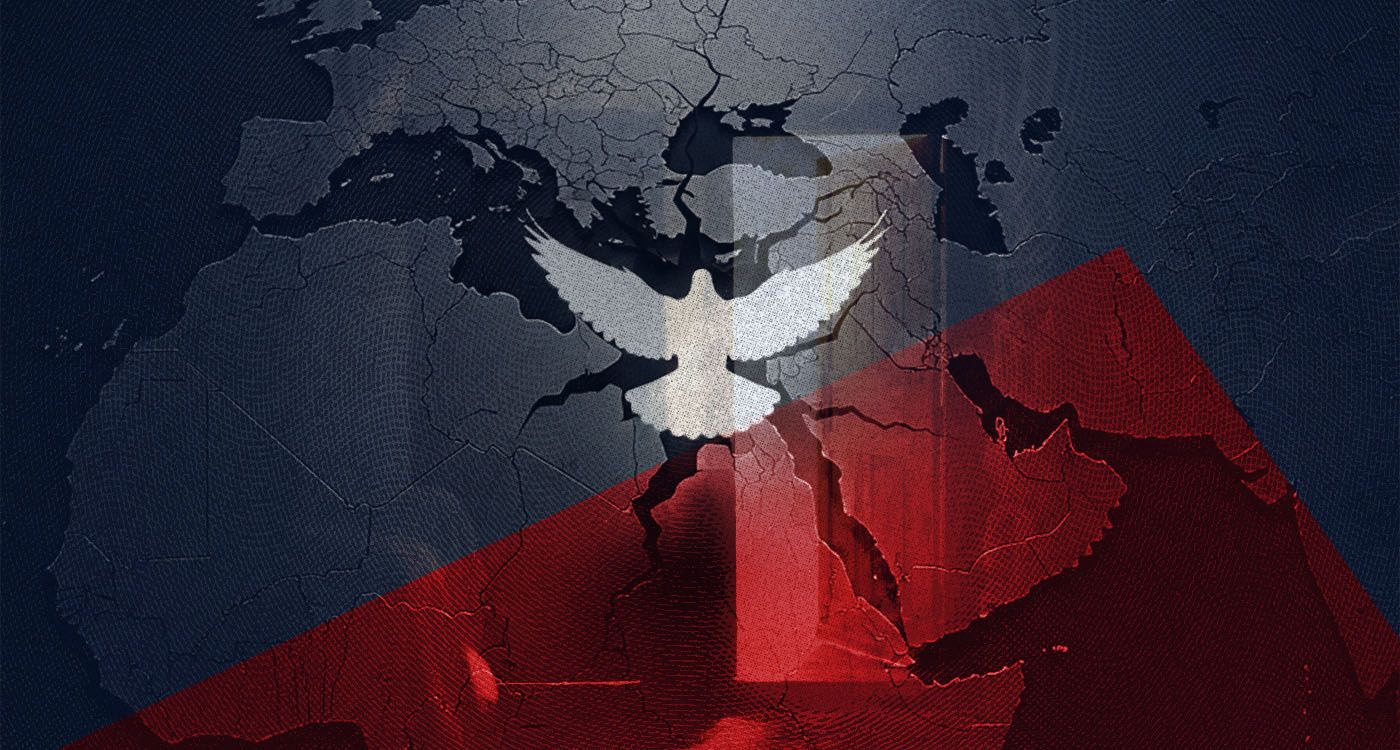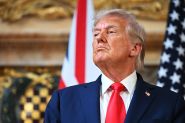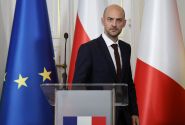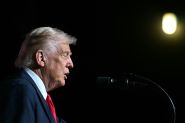- Home
- Middle East
- Is Peace Now Possible Amid Collapse of Iran’s Imperialism?

©This is Beirut
The U.S. policy aims at preparing the landscape for a sustainable regional peace predicated on negotiated peace plans, internal democratization and inclusiveness, as well as economic development.
The epilogue of the cascading wars that have taken place since October 7, 2023, was quite promising since the destruction of Iran’s regional proxy network was a good omen. For the first time, the region was able to imagine the possibility of extracting itself from the tight clasp of Iranian Shiite imperialism. Nonetheless, however bright the prospects might be, Iranian revanchism is resurfacing and pledging once again to disrupt the emerging dynamics. It risks dragging the region back to its unending civil wars, rampant chaos, and inability to stabilize itself around a reformist agenda made up of negotiated conflict resolution and overhauled political institutions to oversee the transition to peace and the reconstruction of political and social matrices. The UN’s timely endorsement of the peace plan devised by the Trump administration was an auspicious move towards a workable transition in Gaza and the reopening of the Palestinian dossier to an alternative agenda, along with the consolidation of the truce and the mandated return to diplomacy.
Whichever policy plan is adopted, the U.S. is fully cognizant of the interdependencies between regional states and Iran’s proxies. None of the issues at stake are likely to untangle unless the unifying plot is addressed as an interrelated whole. Disrupting the unifying factor of Iran is the key to tackling individual cases in their own right. The ideological factor and its strategic correlates are essential for the strategy of disruption to move ahead and achieve its expected results: eliminating geostrategic obstacles preventing diplomacy, conflict resolution, and democratization from taking their due place.
When the U.S. administration decided to co-opt Syria’s new leader, Ahmad al-Sharaa, after preparing the terrain for a long time, its policy was contingent upon his readiness to engage in the politics of Islamic de-radicalization, the mapping of an integrated containment strategy coordinated among the major Near Eastern state actors, and the proposal of economic integration as a platform to launch the peace process that supplements the Abraham Accords and seals off a century of endemic instability and conflict proliferation.
The endorsement of the Gaza plan by the UN was a rejection of its previous vote, which imposed a unilateral approach to the two-state dilemma. The Israeli military’s gradual and decisive dismantling of Iran’s subversion strategy was the necessary prelude to the emancipation of political strategizing from the well-entrenched strategic and military foreclosures set by Iran over the last decades as well as the implosion of the interstate system and the short-lived Islamic state improvised by the Sunnite Caliphate and its terror networks.
The U.S. policy aims at preparing the landscape for a sustainable regional peace predicated on negotiated peace plans, internal democratization and inclusiveness, as well as economic development as an antidote to Islamic extremism. The negotiations taking place in Israel at this point in time are by no means exclusive of Palestinians. The sequenced strategy would proceed incrementally if it were to succeed and overcome the conventional obstacles that have preempted the peace process all along. Hamas remains the major hindrance since it refuses to acknowledge defeat and is determined to perpetuate its hold over the civilian population in Gaza as a shield to safeguard its power.
The scheme, which advocates the division of Gaza between Israel and Hamas, is a non-starter because it inevitably prepares the ground for future wars. Ceding the Strip to an international governance is the most realistic approach to ending the dynamics of warmongering. International governance must be a main topic of discussion if the chances of peace are to thrive and sink solid roots. Otherwise, Palestinian representation should be thoroughly negotiated between Palestinians and Israelis on the basis of mutual recognition if the everlasting cycles of violence are to stop and give way to progressive normalization.
The demilitarization of Gaza is the logical outcome of this holistic approach and should leave no room for idle discussions around the legitimacy of Hamas and its institutional modulations. Hamas's defeat means its project should be buried once and for all if peaceful coexistence and normalization are to replace the open-ended state of war it advocates alongside the variants of international leftism that feed on its pathological narratives.
This leads inevitably to the Lebanese landscape and the hermetic controls set by Hezbollah, its associates, and its clones. The defeat of Hezbollah has not yielded a retrospective critique of an ideological vision and a strategy that led to the destruction of Lebanon over the last three decades, the psychotic claustration of the Shiite community within an ideological panopticon, and the conversion of wide stretches of the Shiite community into platforms for transnational organized crime piloted from Lebanon. Unfortunately, the late political evolutions that succeeded the unraveling of Hezbollah were sabotaged through complicity, ideological biases, and blatant anti-Semitism.
Lebanon’s president of the Republic, army head, and a compliant government—in spite of whatever public statements have been made—have deliberately failed to uphold the November 27, 2024, truce stipulations. These include disarming Hezbollah and dismantling extraterritorialities, be they sectarian security perimeters or Palestinian militarized camps. Lebanon finds itself back in a situation of pervasive insecurity, which prepares the ground for civil unrest, if not civil war. Rather than seizing the interlude of the truce and defeat of Hezbollah to engage in peace-making and reconstruction, the incumbents have intentionally waffled on their commitments, embraced the Hezbollah narrative, and multiplied their ideological and political obfuscations. This has enabled Hezbollah to rebuild its networks, reorganize at various levels, and resume its subversive politics.
President Joseph Aoun's gyrations betray his ambivalences, while Nawaf Salam's initial reservations owe to his erstwhile political affiliation, the ideological animosity of his co-opted ministers—ideological militants who profess political anti-Semitism—and the placidity of the technocrats who form his cabinet or their hidden affinities. Lebanon is profoundly cleaved around the issues of the truce, the purview of negotiations with Israel, and the ultimate necessity of a peace treaty with Israel if it wants to end seventy-seven years of wars waged by the proxy and subversive radicalism that spawned on its soil.
The failure to launch and uphold the awaited peace dynamics is highly hazardous and will inevitably recoil on civil concord and regional peace. Palestinians and Gazans, by and large, are wary of war resuming in Gaza, and the Lebanese are, in their majority, overtly hostile to conflict. Lebanese Shiites are as divided as other Lebanese are, but the vast majority remain hostage to the worldview of militant Shiism and are willing to use it to cater to nurtured ideological and hegemonic whims. Israel is biding its time, waiting for the outcomes of the U.S. diplomacy before deciding to complete its unfulfilled war of necessity.
Read more





Comments